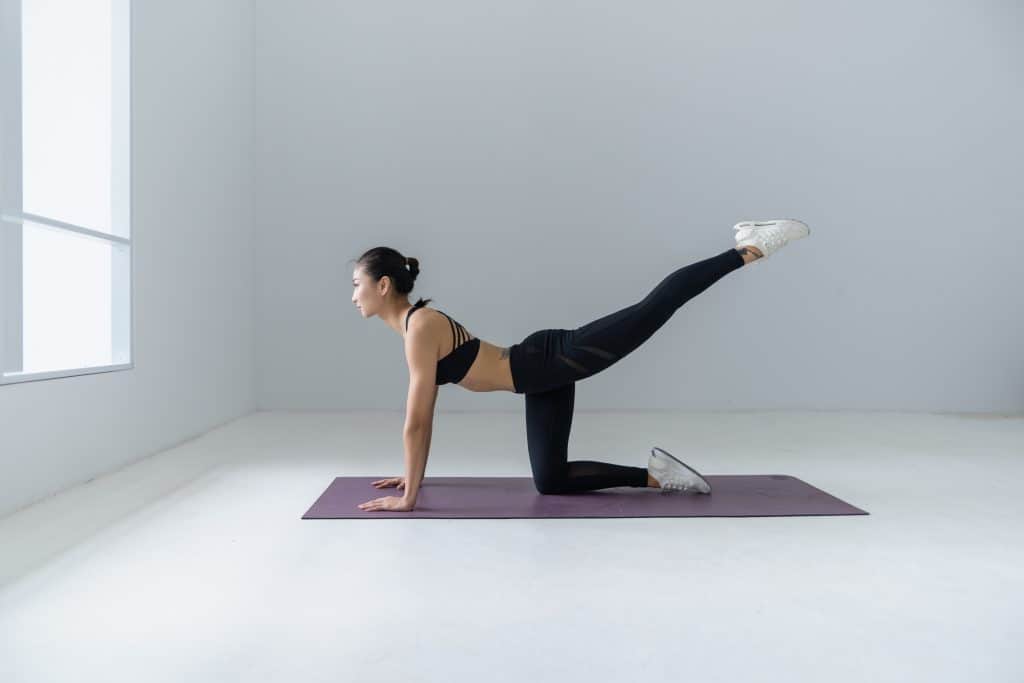It’s hard to think of what your body will go through post-labor. Your mind will be busy taking care of your newborn. So before your delivery date, I welcome you to read over my postpartum recovery checklist and get things ready beforehand. Make it as easy for yourself as possible.
If you’ve already had your beautiful babe, this list is still great for those first few weeks of recovery!
“This post contains affiliate links, which means I receive a small commission, at no extra cost to you, if you make a purchase using the links.”
1. Sitz bath
If you gave birth vaginally, I highly recommend getting a sitz bath. For 2-3 weeks, postpartum I took a sitz bath 3-4 times per week. One week I had one every day. It helped with the pain and I believe accelerated my healing process. A sitz bath is number one on my postpartum recovery checklist. It is a must-have.
Here is the simple Epsom salt sitz bath recipe I used:
- Fill the sitz bath with warm water (check the temperature before dunking your junk) and add ½ cup of Epsom salts, and fully dissolve. Make sure it is pure Epsom salts.
- Fully submerge your vaginal and anal area and sit for at least 10-15 minutes
The sitz bath will help with soreness, burning, inflammation, and swelling. I would recommend, going with slightly cooler than warmer water. It will be more soothing. However, don’t make it cold, it’s just unpleasant. I would grab a book or my phone and that 15-20 minutes was mine. To focus on my recovery and just to have a moment for myself. I highly recommend the simple recipe above.
2. Frozen pads
I have personally never used this but I heard that it is very helpful for swelling, pain, and inflammation down under. Have some ready in the freezer before your due date.
The frozen pads (also referred to as “padsicles”) provide relief and help with postpartum bleeding.
A great recipe I found from a wonderful source, mamanatural.com
What you’ll need:
- Sanitary pads (I would use these)
- 4 tbsp witch hazel
- 1 tbsp aloe
- 1 cup of lavender tea (seeped for 20-30 minutes)
Mix the witch hazel, ¼ cup of the lavender tea, and aloe into a spray bottle. Shake well to combine all the ingredients and spray a thin layer onto your sanitary pads (do not completely saturate the pad) and store in the freezer.
The lavender is soothing and is used for its antimicrobial properties. Aloe is also soothing and helps speed up the healing process. The witch hazel has anti-inflammatory properties and acts as an astringent making it safe to apply directly to the perineal area. (Sources can be found on the mama natural website)
There are alternatives if you want don’t want to use the recipes I’ve provided. This is a great alternative for those who just want it all prepackaged.
3. Squirt bottle
Another must-have on your postpartum recovery checklist is a squirt bottle. Just when you think the postpartum journey can’t get worse, if you gave birth vaginally, you will experience stinging when you pee. More so, if you have a tear or had an episiotomy.
I received this squeeze bottle from the hospital to take home but there are specific squirt bottles you can purchase like these. Have it filled and ready for each bathroom visit. I used cool water which helped relieve the stinging.
I recommend filling the bottle completely with cool (not cold) water and squirt and apply as you urinate. My squirt bottle was quite large and I usually had enough water for the whole time.
4. Pain Medication
During your healing, you will experience lots of discomfort and pain. Having a bottle of Tylenol handy to take the first 1-2 weeks. It really helps. Make sure there is no coating on it and take regular strength ones. Don’t worry, I checked with my midwife and it is safe for breastfeeding mamas.
The hospital, during my first few days postpartum, told me to alternate acetaminophen (Tylenol) and ibuprofen (Advil). Make sure you check with your doctor before taking it especially if you have complications or medication restrictions.
Your body has gone through a lot, if you’re really adamant about not taking anything, I respect your decision. However, you will not be on these over the counter medications forever. Allow your body to heal without the pain. Tense and achy muscles get more tense and more achy before they get better. Help relieve the pain and allow your muscles a real chance to recover. Don’t just suffer.
Whatever you chose to do, remember there is no guilt. You do what you know is best for you.
5. Cold cabbages
I have personally never used this. I was lucky. My daughter latched on well and I didn’t have any issues with my milk coming in.
My mom-friends recommended using cabbage leaves. Separate the cabbage leaves and place them in the fridge. When your milk comes in (usually 2-4 days after child-birth), it will help relieve the hot, hard swelling of the breasts. It also helps relieve tenderness of the nipples and during milk let down.
6. Pelvic floor exercises
What is pelvic floor? Great question! Not many women know what it is!
Your pelvic floor is a group of muscles and other connective tissue lining the vaginal wall. These muscles support your bladder, uterus, and bowels. These muscles and other core muscles found in your pelvic region allow for the majority of the movement you do on a daily basis. After you have a baby, vaginally, or via C-section, it is important to strengthen your pelvic floor.

During the last trimester, the baby is moving into place and getting ready for delivery. You’ll also find that the baby gains much of their weight during this time. With both these factors, there’s a lot of pressure on your pelvic floor, and during delivery, you are stretching or in the case of a C-section cutting through and weakening your pelvic floor muscles.
A weak pelvic floor results in bladder leaks, unpleasant postpartum sex, and a weak core, just to list a few. I would highly recommend Dana Landren’s pelvic floor program. It is a strengthening program. She teaches you how to engage it and to know when you are activating your pelvic floor muscles properly. These muscles are incredibly difficult to engage and keep engaged and even more so to strengthen. This program actually also helps you strengthen and pull in that postpartum pooch.
You most definitely need to add pelvic floor strengthening to your postpartum recovery checklist.
I would also check out Dana’s Instagram for pregnancy-friendly and also post-pregnancy exercises for those who suffer from diastasis recti.
7. Stool softener
Recovering from delivery is definitely not PG-13. Yes, ladies, we are going there. We are talking about the first postpartum bowel movement.
Now, you are going to be very tender and sensitive down there and that first bowel movement can be one of the hardest things you’ll do postpartum. To be honest, I was quite nervous about it. The nurses kindly provided me with some stool softener to take before I was discharged from the hospital. I highly recommend taking some stool softener.
This might be a little TMI, but I didn’t have any issues with my first postpartum bowel movement. I also recommend drinking a generous amount of water to help.
8. Nursing pads
When your milk comes in, your body does not know how much to make. As you feed your baby your body is learning how much it needs to produce. For many moms, it can take a few months for your body to fully adjust to proper production amounts. And this will ultimately result in leaks.
Sometimes when you are unable to feed your baby on cue (such as every 2-3 hours) your breasts will still let down milk, which will also result in leaks. I recommend these nursing pads. The capacity is very good. When I wore these nursing pads, I never had any leaks. They have an adhesive portion that sticks to your bras to keep them in place.
I also recommend using reusable/washable ones. I found that the disposable ones were amazing but I went through so many of them. Let’s be Team Environment. If there’s a way to reduce our footprint on the Earth, we should do it. I’ve heard great things about this one.
9. Postpartum belly band
In the first few weeks postpartum, the uterus is working to contract and get back to its original size. It is shedding all the tissue it needed to grow the baby and can result in cramps and discomfort. I would really recommend this belly band.
A belly band helps with the cramps and discomfort, I also found it lessened my postpartum bleeding. Another great pro to the belly band is that it also helps the skin recover as it pulls back after months of being stretched. All these things help reduce the postpartum belly.
For this particular belly band, I wore a size small and I use to be a size 2 in pants and size 4 in a dress. It was definitely tight but you want it that way. I hope that helps with sizing.
10. Nipple cream

A good friend of mine, who became a mom before me, I am so lucky I had so many amazing friends who became moms before me) suffered from cracked and bleeding nipples. Yes, this is common. She recommended having some nipple cream in my hospital bag ready to use from the get-go.
I am so thankful that I took her advice. The key is prevention, ladies! I am not saying that it will be smooth sailing for everyone. It is important to remember, the nipple cream can only do so much once your nipples start to crack and bleed. However, it can actually do so much to help prevent it if you use it daily and religiously. I recommend this one. It is all-natural and smells so yummy. What I love most is that it is baby safe, so you don’t have to worry about forgetting to wipe it off before feeding. For really bad nipple cracking cases, my midwife recommended this one.
11. Perineal Spray
I recommend getting this perineal spray. I kept it in the bathroom next to my squeeze bottle. After I was done my business, and I dabbed myself dry, I would give a generous application of this perineal spray. It is soothing and it is also full of natural ingredients to help with the healing, inflammation, and soreness.
It’s great because you can have it with you on the go and for those busy, exhausting days when you just can’t squeeze in a sitz bath.
12. Prepared freezer meals
Preparing meals will be so hard. It’s a combination of the lack of sleep, the exhaustion from the lack of sleep, your deep uncontrollable desire to want to spend all your time with your newborn. The list goes on. The point is, you will find it hard to prepare meals and even harder to eat meals.
I recommend preparing freezer meals. I can guarantee a loved one or a close friend will bring you food. There is no doubt about that. However, for that one-off day when there is no food coming through your front door, it’s handy to have a meal all prepped in the freezer, and all you have to do is heat it.
I had a slow cooker so I had prepped 6 meals, 2 different recipes before my due date. I would just open the bag, drop the contents into the slow cooker, and set it for 6 hours in the morning. By dinner time, we had a warm meal ready and some leftovers for the next day too.
13. Take walks
Go for daily walks, mama. You need it. I highly recommend adding this to your postpartum recovery checklist.

It is good for your recovery and also great for your mental wellbeing too. It is a small step forward as you grow in motherhood to venture out, a short and safe distance from the house, with your newborn baby.
I can’t go into the multitude of benefits that going on walks has for you. However, I will list some.
Newborn babies can sleep almost anywhere. So, when you know it is almost nap time, strap your baby into its secure and age-appropriate stroller seat and go for a half-hour walk. The movement will soothe the baby and you are getting some much needed fresh air!
My husband would go on these walks with me. It was a way for us to have quality time as husband and wife. Which are harder to have during the newborn stage.
Going for walks helps you lose that postpartum weight and if you had gestational diabetes like me, you are working towards maintaining a healthy weight and lifestyle. It will lift your mood if you’ve been feeling overwhelmed by the changes of motherhood, which is normal. The benefits are endless and the list can go on and on.
We still go for family walks to this day. It’s a routine we have implemented. It has grown into a wonderful family time.
Welcome to motherhood. It is an amazing and challenging journey but there’s none like it. I hope this postpartum recovery checklist will help you adjust during that newborn stage where the adjustment can be the hardest.
I know, I listed quite a few things on this postpartum recovery checklist. If you can’t do it all, I recommend you do a few that will help you recover physically and mentally. Also, check out my post on 4 surprising but powerful postpartum body boosters!



